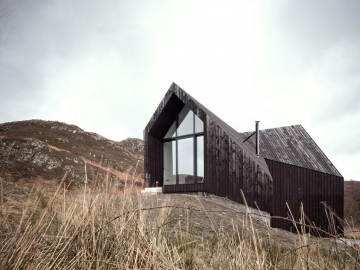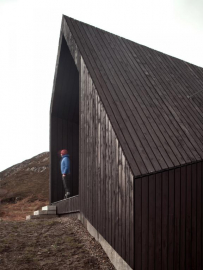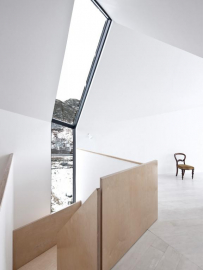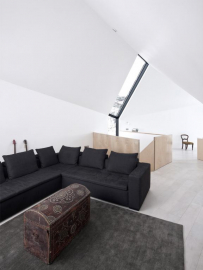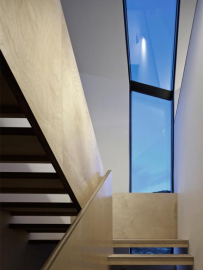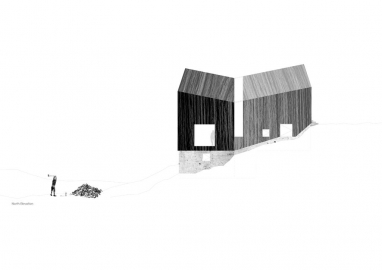House at Camusdarach Sands
Over 2000 years ago the occupants of Skara Brae, Orkney used locally sourced materials to build partially submerged dwellings providing thermal insulation and protection from the storm battered climate. Incorporating these principles, Raw Architecture Workshop has completed a part subterranean new build house on steeply sloping former rough grazing land at Camusdarach Sands.
The House at Camusdarach Sands was designed and built for a young couple already living and working in this isolated location.
The brief was simple: Design a home that captures the sunrise over the mountains and sunset views behind the islands; give us good value for money; use a limited palette of hardy materials; acknowledge the topography of the site, take advantage of it, and respond with a beautiful form and an interesting piece of architecture .
The building is low-tech construction a part subterranean exposed concrete base sitting beneath a more expressive timber frame superstructure clad entirely in black painted timber.
The site was formerly rough grazing land, sloping steeply upwards to the west [+8m across the entire site]. The location is very exposed, and it was important to recognise and consider the building around 360 degrees, whilst carefully considering a building profile and material choice that responded appropriately to the form and dark colours of the landscape.
The building is part-subterranean to reduce visual impact, provide additional thermal mass and shelter from prevailing winds. The concept being it should appear simply as another partly submerged rugged form, surrounded by wild grass.
Given the topography of the site our early response was to locate the living spaces on the upper portion of the plot, with sleeping accommodation and entry level stacked below. During an initial visit we pinpointed specific axis that would provide best views from the site. These were translated into physical models and the symmetrical, splayed and cranked plan was derived. Similar forms were also explored in the section to reduce the visual mass, significantly improve the field of view from opposite ends of the space and increase daylight levels, critical in mid-
winter around this line of latitude. In time the wild grasses will re-grow around the building to further reinforce the idea of a building built into, and not on top of, the hill.
Construction was carried out by a local house and boat building firm and together we develop specific construction details that are common to boat building.
The final external colour was much debated and in the end black was chosen to tune into the characteristics of the peat, gorse and stormy skies. Perhaps, in a few years, we might try a deep red.
Sustainable Aspects
Environmental considerations vary in scale and type, from intelligent building position and orientation, use of thermal mass, local labour, skills and materials, to the inclusion of an air source heat pump and super insulation to provide a U-
Value of 0.15 [W/m2k] to walls and roof.

